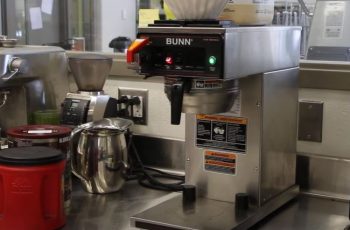For those seeking their morning caffeine fix to kickstart the day, the energy consumption of their coffee machine is seldom a priority. Yet, the routine of brewing coffee has a modest, yet notable impact on your monthly electricity expenses, with the actual costs potentially surpassing expectations based on your brewing method. Explore our guide to discover the energy usage of your coffee maker, and ways to cut down on energy without compromising your daily dose of caffeine.
Components Of The Coffee Maker That Use Electricity
When making coffee, the majority of the energy is used to heat the water. From 50 degrees to a near-boiling level of 200 degrees, it takes about 1 kWh of electricity over 5 minutes. If you heat the water on a stove and pour it into your French press or over a single serving funnel, you’ll probably not use any electricity at all, although you’ll still need to consider the cost of gas.
Some coffee makers also require electricity to power the warming plate that keeps the drink hot after the brewing process is complete. The bells, whistles, timers, and other convenience features take up a bit of electricity as well. Furthermore, if the model is equipped with a standby power system to run the clock or timer, it will utilize an additional watt of electricity.
A Coffee Maker Costs How Much Electricity
In most consumer models, the automatic shutdown happens after two hours with power consumption between 750 watts and 1200 watts. Accordingly, it will cost approximately .083 kWh for each pot, and about 730 kWh for a full-sized automatic drip coffee maker at a rate of 12*/kWh, which is $87.60 per year or $7.30 per month.
On the other hand, an espresso machine uses about .0156 kWh per shot. That costs a little more than brewing coffee in a drip coffee maker, but if you like the smell and taste of espresso, it may be worth it.
You must calculate how much electricity you are using to meet your coffee pot’s wattage requirements, and you need to check the type and model of your coffee maker to determine how many kilowatts it uses. When compared to other coffee makers, drip filter coffee makers use the least electricity, although they often use electric-resistance warming plates to heat water and keep it warm.
Energy Consumption Of Single Serve Coffee Makers
The convenience and speed they provide have made single-serve coffee makers very popular. There is a downside to convenience, however, not just a cost associated with the use of endless coffee pods that you throw away. Hot coffee comes out of these devices at the touch of a button because they have a heating element that keeps water warm at all times like a miniature water heater in your house.
As long as it is not turned off, it will use an average of 60 watts per hour to keep the water warm all day. To make a cup of coffee with a single-serve coffee maker, .024 kWh is required, which is three times less efficient than with a drip coffee maker.
How To Limit Coffee Maker’s Energy Consumption
Many people fail to consider the power consumption of small appliances like coffee makers, toasters, electric blankets, and so on. Although many of your appliances are only costing you pennies each time you use them, it’s still smart to conserve energy overall. When you think about it, a few dollars each year times many minor appliances can amount to a considerable amount of money. So why waste it on electricity? Moreover, you’ll gain the psychological satisfaction of knowing that you’re helping to reduce consumption, which will lessen the impact on our natural resources.
The following options will reduce your coffee-related energy usage without compromising your coffee routine:
1.Use a manual brew method, such as a French press or pour-over. If those don’t appeal to you, you can still save by not purchasing single-serve coffee makers.
2. When not being used, choose a coffee maker that shuts down completely, instead of going on standby. When you’re not brewing something, just unplug the coffee maker.
3. Make sure your coffee maker has the Energy Star label so you know you are buying an energy-efficient model.
4. Keep your unit clean of mineral build-up monthly to extend its life and prevent bacteria growth.
5. Make your hot beverages at home instead of driving to a coffee shop. You’re very likely to pay more for fuel than you’d save by reducing your electricity usage, not to mention the cost of coffee.
Conclusion
Understanding how much energy you consume makes it easier for you to conserve it. Clean it regularly and turn it off when not in use can also help. You can save money by buying an eco-friendly or energy-efficient coffee maker. The energy consumption of coffee makers varies greatly. Therefore, whatever you choose, you should know how to limit your energy consumption.


